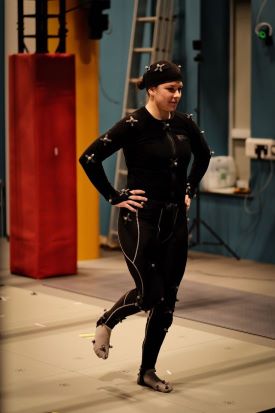Biomechanists are exploring the strategies used by people with chronic ankle instability to balance. Chronic ankle instability often develops after repeated ankle sprains, or a sprain that has not adequately healed. Using the VSimulator facility at Exeter Science Park, the team have been moving the floor beneath them and measuring the movement and muscular response. The aim of the study is to inform physiotherapy interventions to help the condition.
Xiaohan Xu, China Scholarship Council funded PhD student at the University of Exeter’s Sport & Health Sciences department, is working with Exeter colleagues Dr Genevieve Williams, Professor Joanna Bowtell and Dr Will Young, along with Dr Daniel Fong (University of Loughborough) to carry out research the research.
Chronic ankle instability (CAI) manifests in repeated giving way of the lateral (outer) side of the ankle and can occur during movement or just while standing. Symptoms can include repeated turning of the ankle, especially on uneven surfaces or while exercising, chronic discomfort and swelling, pain and tenderness and the ankle feeling wobbly or unstable.
Xiaohan is using the VSimulators’ motion capture, nine force plate moving platform and Delsys EMG equipment for data collection. She will compare participants with CAI to healthy controls. The data will then be processed and analysed, with the aim of building a model to bridge between clinical and biomechanical measures of ankle function and balance strategy. It is hoped that the research will help establish the important factors affecting balance control and ankle function, including strength and proprioception.
The facility is being used to explore how people respond to external perturbations at the biomechanical and neuromuscular level, which informs stronger evidence for the underpinning mechanisms of balance control in people with chronic ankle instability. The platform can produce movement in varying directions and parameters including frequency, magnitude and acceleration of movement can be controlled.
Xiaohan said: “Single leg balance control strategies are more complex to define, since they often involve whole-body coordination strategies in complex balance tasks. The study may provide significant insight into the sensorimotor manipulations in postural controls in CAI and provide information to inform physiotherapy interventions.”
She added: “It’s amazing to be able to test balance and ankle functions in almost all aspects of the biomechanical system. Some of the participants said that they better understood their ankles and balance after taking part in the study.”

